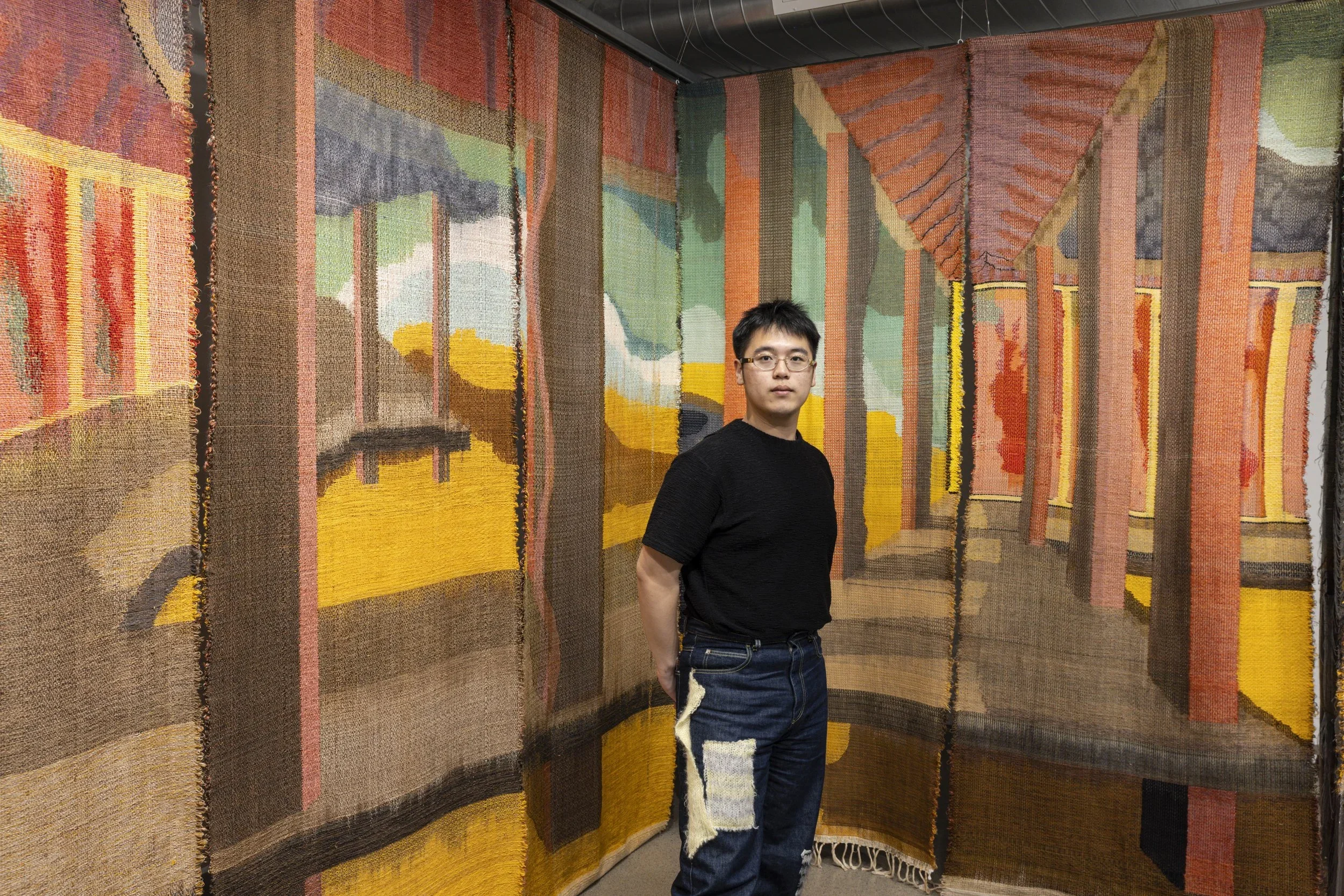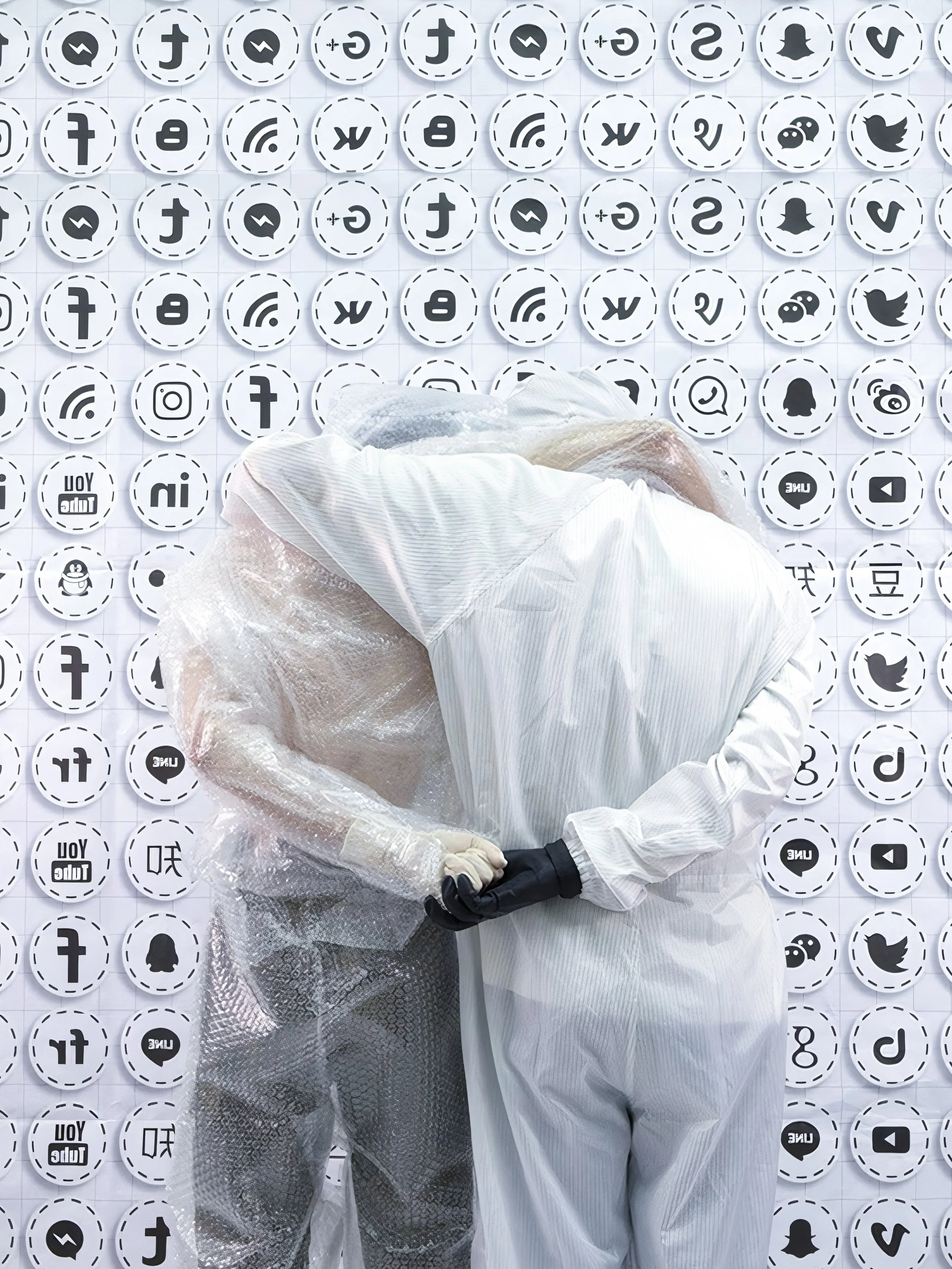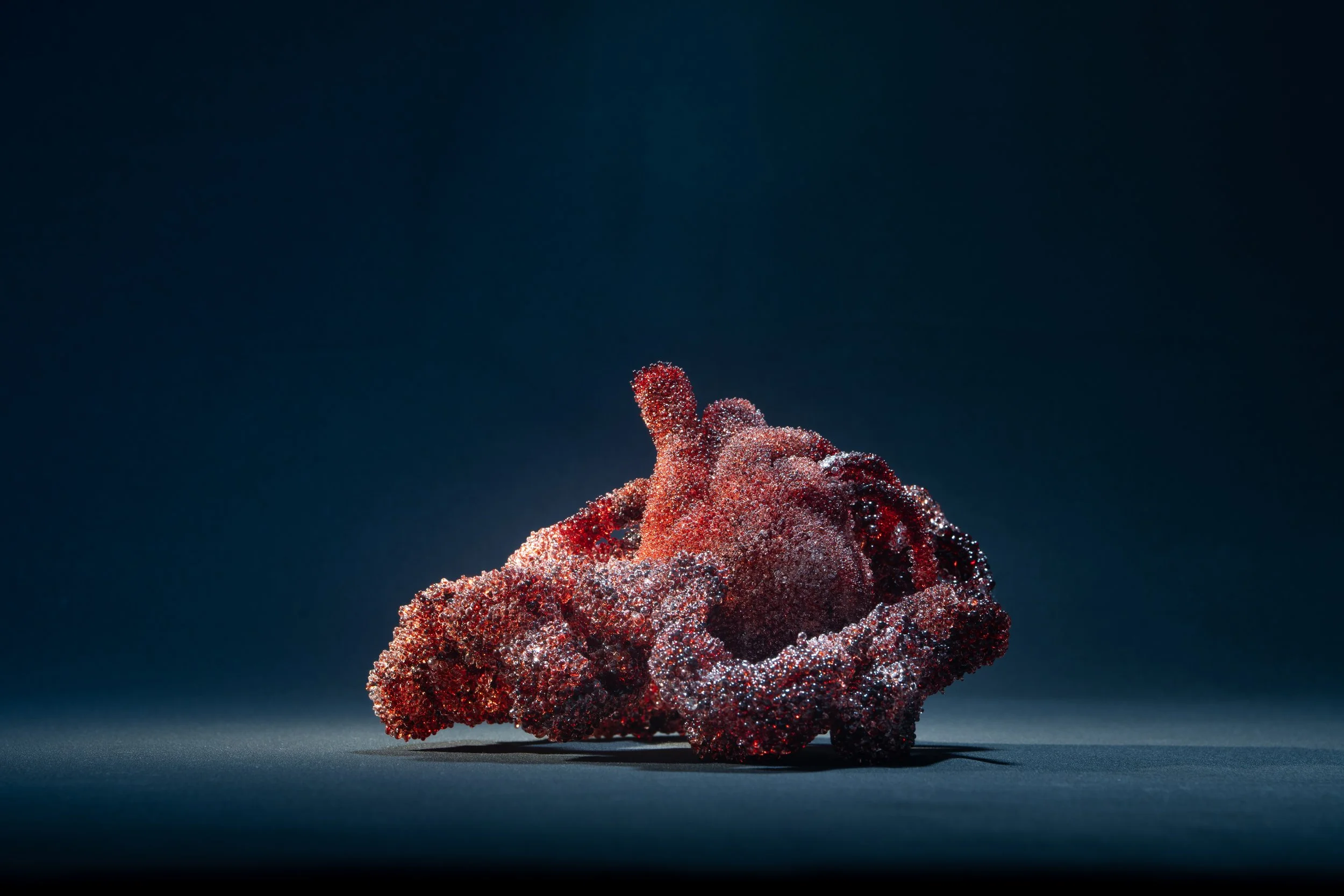12 Questions with Marina Gasparini
Marina Gasparini was born in Gabicce Mare (Pesaro, Urbino). She lives and works in Bologna, Italy. After graduation from the Academy of Fine Arts in Ravenna, she started her artistic activity in Bologna in the '80s. Her practice focuses on living places and is mostly based on drawing, embroynding, and installations. Since 2001, the employment of textiles has been constant in her works. She has exhibited her works in galleries and museums in solo shows and has also participated in group exhibitions and the international exhibition of textile art. She is a professor at the Academy of Fine Arts and has held workshops on the theme of cartography in art at the University of Salamanca (Mapping Salamanca); at the Universitade de Lisboa; at Mimar Sinan Universitesi in Istanbul, and at PXL Mad University in Hasselt, Belgium (Alfabetlanti); the Oulun Taidemuseo, Oulu, Finland (Archiscapes); the Civic Art Center in Galesburg, Illinois (String portrait of Galesburg); the Renovation Pro Art Center in Shinano-Omachi, Japan (Self- portrait as Otafuku); the Merano Children's Book Archive (Class Atlas). She has also participated in artist residency programs in Rajasthan, Japan, the United States, and Finland.
ARTIST STATEMENT
"Marina Gasparini is an independent voice on the frontiers of drawing, writing, installation art, and conceptual representation."
Gianluigi Colin, Italian artist, writer, and art director
In my artistic practice, the union of twisted threads, interwoven, and stratified became the symbolic evocation of the quotidian's vein system where people, objects, and spaces are woven into a network of relations. Writing and visual emblems coupled with the use of textile fabrics are constant in my works, which are sometimes site-specific installations as well as textile collages, embroidered canvas, or ceramics, where iconographies from different eras and cultures are resettled on a new "territory." During some art residences programs in different countries like Japan, U.S.and Northern Europe, I've held textile workshops involving the communities on the themes of signs like maps, money, and spaces. The "recasting" of words, objects, and images may mean setting in motion a series of creative processes that sometimes our knowledge has not yet investigated. I'm interested in symbolical signs and historical representations or hand-craft techniques not simply as cultural or intellectual emblems or activities, but as seeds of a simple, universal language.
Marina Gasparini | Photo Marco Rambaldi©
CHORA PARK
Chora Park, Marina Gasparini | Photo Studio Cento 29© >> http://www.marina-gasparini.vision/2019/01/20/chora-park/
The installation “Chora Park” was part of the programming of the Environment cycle, between nature, history and culture developed by the Cultural Center of the San Carlo Foundation, in Modena (IT). This site-specific work has been proposed as a reflection on the environment concept and focuses on the microcosm/macrocosm dichotomy. I chose to dwell on the iconological heritage that characterizes a precise historical moment: when two illustrated scientific texts (the De corporis humani Fabrica by Vesalius and the De revolutionibus orbium coelestium by Copernicus), both of 1543, inaugurate the modern separation between microcosm and macrocosm and the "deconstruction" of the human body as a practice of anatomical knowledge. This double installation is based on a group of three textile sculptures where the blood system of the head, the lungs, and the lower part of the body from Vesalius's book are printed and embroidered and completed by neon lights as metaphors of the city (Chora) in the Platonic “Timaeus”. Follow the red thread of the word "Chora," a chain of images including iconographies and chromatic suggestions a second group of a metallic necklace composed of the orbits of the stars ringed together represent the first heliocentric cosmological diagrams. Unraveling between interpretations, or rather "inscriptions", this term confronts us with the ambiguity of the logos and that inherent in the concept of environment.
Chora Park, Marina Gasparini | Photo Studio Cento 29©
INTERVIEW
Marina, before talking about your art, could you tell us about yourself?
I was born and grown up in a small Italian city on the Adriatic coast. Still, I spent part of my childhood traveling across Kenya, Uganda, and Tanganyika with my family because of my father's job. Got back in Italy, I studied in Ravenna, the city of the Byzantine mosaics. Recently I'm starting living between Bruxelles and Bologna, where I teach graphic and fashion design at the Academy of Fine Art.
What is your aim as an artist?
As a visual artist, I aim to say something using a fairly subjective visual language. By my own mind-design, that I imagine, is at the same time unique and connected with a kind of collective feeling. That's the reason why I decided to focus my research on a "conceptual representation," which starts from images and symbols that we could consider as common goods or human heritage. Every day we communicate through a more-or-less- shared alphabet of visual symbols; I'm just used to representing them in a very human cultural appropriation because textile arts imperfection is largely admitted. When I started to include fabrics and needlework and sewing in my works, I also decided to insert words and texts because, at that moment, I felt the necessity to testify simply my life. During the centuries, women's world has become slightly lacking in exciting characters or activities that one could get identified with. I think that woman's existence doesn't need to be so special to be an interesting artistic o literary subject. Just to pronounce "me" for a woman artist is pretty a new rule in the whole art history. I have never learned to embroider, but I decided to use embroidery, which is supposed to be a relaxing job, to describe disturbing and obsessive thoughts. The use of first personal pronoun (everybody calls her/himself "I", or "me") or showing my solitary living spaces, in other words, could be read as a description of a relationship that is first between our living spaces and mindsets. Many people have improved their awareness, especially during the Covid 19, but once again a gender can testify a long experience in this field.
Chora Park, Marina Gasparini | Photo Studio Cento 29©
How do you translate symbols and historical meanings to sculpture and installation art?
For me, the translation you mentioned in this question is a game that starts from names and words or sentences. There is no precise rule because I don't use a linear process but rather the thread of memory and reasoning thread. I think that words and images are still magically connected in all over the world, in every country and culture, but for me is difficult to say how, because I ignore, wether images or languages, have a code they can share or if there is something natural in this process of association. Maybe we also have a visual language processor somewhere in our brain. By the way, I can tell you that it has been important to discover "iconology" many years ago to me. At that time, I was mostly painting, but I was starting to be interested in the digital applications for art and net-art movement and theories. "The art of memory" by Frances Yates has been a key book to highlight the relationship between images, objects, and places in the development of multimedia and interactive contemporary thought. From Yates essays, I have learned many weird lessons of how to pass from a concept to a three-dimensional object and vice-versa, but always the translation depends on the whole context… finding the thread, following losing the thread.
You are passionate about art, design, fashion, and history. How do you successfully express your art with different mediums?
Art, design, fashion, and the history of art are all connected by the idea of creativity. About creativity, many things could be said. That's why, if you don't mind, I would like to answer your question with a quotation from the philosopher Francesca Rigotti: "As a matter of fact, all the activity of creative thought could be defined as the activity of threading and weaving: grabbing onto threads of thought and finding the thread-ends of others' ideas, spinning one's own autonomous threads, and then all together weaving and knotting and intertwining a new and original network of reflections. The history of creative thought as a beginning like a thread, not to mention creative activity, starts with the myth of Ariadne, as mentioned above, and not by chance continues with the myth of Arachne as narrated in Ovid's Metamorphosis, and with that of Ananke: "necessity."
Chora Park, Marina Gasparini | Photo Studio Cento 29©
Could you tell our readers the secrets behind your site-specific installation, "Chora Park?"
The installation Chora Park has been conceived for the "Sala dei Cardinali," the stunning "Aula Magna" of the XVIII century Collegio San Carlo in Modena. In this large hall, the Arts and the Sciences are depicted in the ceiling fresco in the form of young and beautiful girls. At that time, the college was only attended by noble boys, and along his corridors, you can still find portraits of lonely young men or religious figures, like the Cardinali. I'll tell you, the very secret of my installation is that the project of "Chora Park" started when I found myself in front of Magritte's painting "Blood of the world" in the Magritte Museum in Brussels. Then, while a group of sculptures I installed on the ground represents the solar system illustrations I've found in some ancient books, one of the two groups of sculptures I realized for this exhibition represents the blood system in the anatomical book of Andrea Vesalius De humani corporis fabrica. However, in Italy, there are expressions where "blood "refers to bodily enjoyment if you had seen that pink light in this serious institutional space, you would have thought that philosophy is not boring at all, but that it is itself the blood of the world.
Can you tell us about the process of creating your work?
I start with a project. I wouldn't say I like to stay in the studio working for myself. Some artists don't conceive this behavior, but for me is important to deal with a concrete goal because I need limits. When I have a brief in my mind, I start to research, a classical brainstorming. Sometimes I buy and read useful books; sometimes, I read a useless book related to the topics of the project. When I'm about to grasp the solution, a serendipity state brings me the technical means I need for the effective realization. There is a moment that I need to write down the concept and the materials, the size of the work. This is difficult but useful. In every project, I like to experiment with something new, like a technique, certain fabric, or printing; that's why I must have limited time. I prefer to realize unique pieces if the artwork's dimensions are large and produce a series of small works like textile collages o ceramics. When a series and is finished, I start to study something new, sometimes from old experiments. As a result of this, my studio is full of nonperforming artworks; they are the ones I love the most.
What challenges do you face while working in a historical space?
The historical place is very often considered as something sacred. As you say, this is truly challenging. I think that the reason can be found in the respect they inspire even when the exhibition's visit is not accomplished by a deep historical knowledge regarding the place. This could push the artist to give explanations, rational explanations, the artistic choices, and the reason for his appropriation of the "sacred area." Unless your work is a kind of "mise en abyme," and although you are aware of your processes and your art practice, your intervention could be perceived as too "cold" if the explanation is too rational. Luckily, the result of the interaction among artists, visitors, and places is all the time rich and exciting. When the place is respected, and as an artist, you are not afraid to "disappear" to let the places show their secrets. This is the biggest challenge.
Chora Park, Marina Gasparini | Photo Studio Cento 29©
Do you have a role model that you've drawn inspiration from when creating your art?
Many successful woman-artist could represent an exceptional model of strength, especially in the past. According to my temperament, I refer to the life of an introverted artist; my model could be kind of Emily Dickinson, both in male and female versions. Instead, I always found it very important for me to reflect on the concept behind other artists' work; however, there are artists whose work I love despite the fact that I don't get them. There are also some artists who everybody understands except me. This is the case with Picasso. He is a supreme role model at all, so high in his freedom and consciousness of his talent that it is almost embarrassing to stand in front of his artwork. I currently started to copy some of his drawings and paintings in my domestic style but in order to get it. When you make a copy of Duchamp's artwork, you may seem witty, but the result is definitely fun if you copy Picasso. Now to be serious, I tell you the truth: I always have been fascinated by the life and work of Hilma of Klint, or Emma Kunz, and other women artists placeable between surrealism and abstracts. I recently discovered the great sculptress Barbara Chase Riboud and her work between literature and plastic art.
What do you believe is the key element in creating a site-specific installation?
Space is never neutral, overall, when it is empty. Some sites are poor, and some are full of things and meanings. The key might be a soft intervention when you deal with a minimal ambient and show your baroque side when space is already loaded, and you are "in conversation" with the art of the past.
Performance sometimes could be considered site-specific art. The new generation's performance is often based on space, and sometimes, sculptures or installations are performative because they can change completely the environment where they are placed. I also think that color is a very important key, as we can learn from Eliasson, Turrel, Flavin, Kapoor. A great part of the arts is site-specific. We can say that a site-specific installation is a form of social or political sharing because the artwork has been designed for a public space or for a community. However, in this very moment, the sense of the public places and their implications is just a big interrogation mark.
Chora Park, Marina Gasparini | Photo Studio Cento 29©
What advice can you give to beginning artists who want to pursue a sculpture and installation art career?
To be a sculptor needs huge spaces and this is difficult when you live in a big city. I saw many young artists traveling around the world through residencies. I think that's a great experience. It is worth using this opportunity from many points of view: a suitable studio where you realize a project, international exchanges, and comparison with artists and others mean. You can also start to experience how to deal with the expedition problems and other practical issues. Installation always involves a careful design of spaces and materials, which may change from time to time. Not all artists want to question their techniques and methodology in each work, but today it has become indispensable for almost all artists.
What other interests do you have outside of art?
I love walking in the green: woods, forests, parks, and as Andy Warhol said:" I love to smell the flowers but I can't."
You can not live without…. Chocolate, Coffee, or Music?
I can't live maybe without music, but I have never tried.
Marina Gasparini | Photo Marco Rambaldi©


























